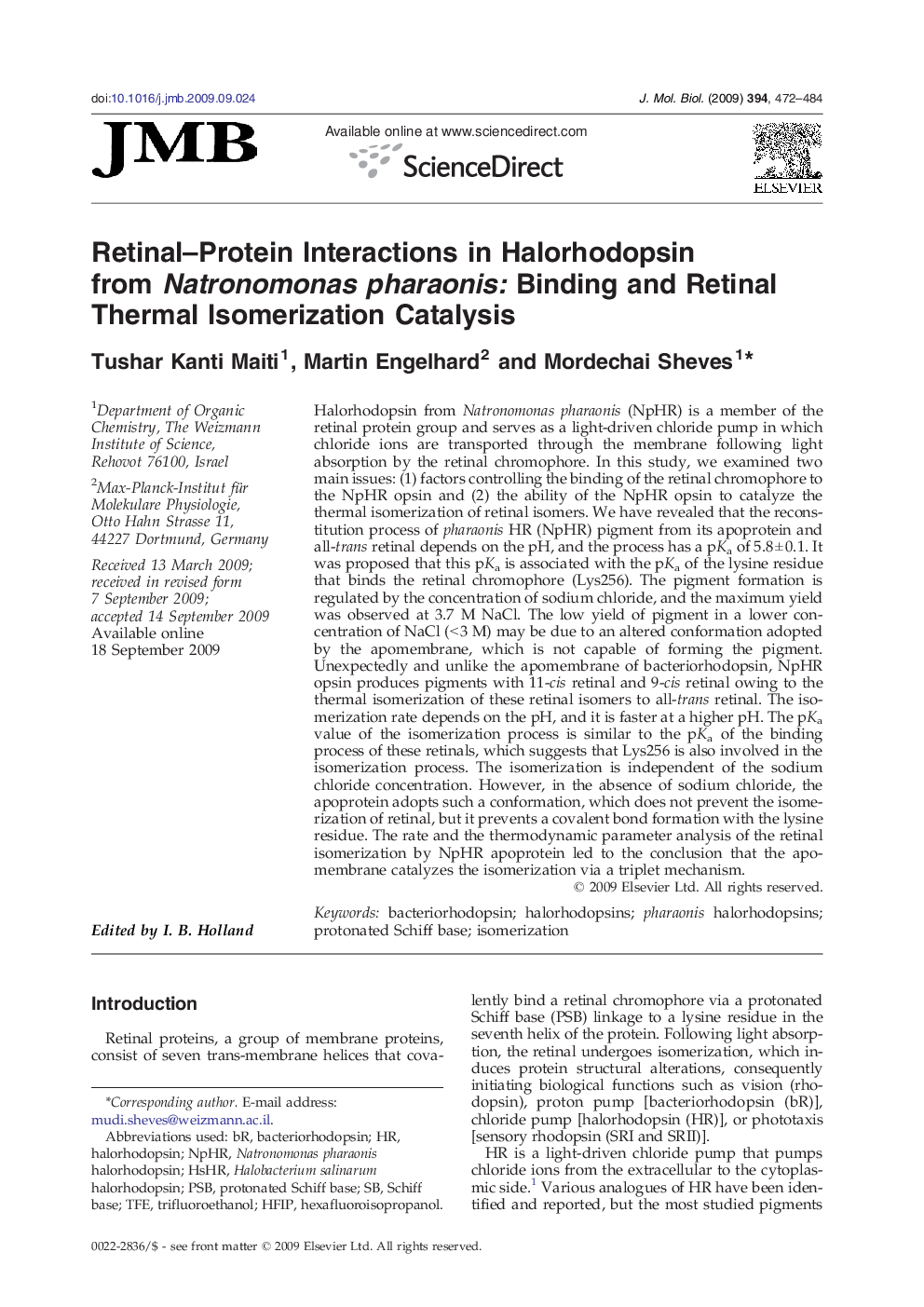| کد مقاله | کد نشریه | سال انتشار | مقاله انگلیسی | نسخه تمام متن |
|---|---|---|---|---|
| 2186248 | 1096043 | 2009 | 13 صفحه PDF | دانلود رایگان |

Halorhodopsin from Natronomonas pharaonis (NpHR) is a member of the retinal protein group and serves as a light-driven chloride pump in which chloride ions are transported through the membrane following light absorption by the retinal chromophore. In this study, we examined two main issues: (1) factors controlling the binding of the retinal chromophore to the NpHR opsin and (2) the ability of the NpHR opsin to catalyze the thermal isomerization of retinal isomers. We have revealed that the reconstitution process of pharaonis HR (NpHR) pigment from its apoprotein and all-trans retinal depends on the pH, and the process has a pKa of 5.8 ± 0.1. It was proposed that this pKa is associated with the pKa of the lysine residue that binds the retinal chromophore (Lys256). The pigment formation is regulated by the concentration of sodium chloride, and the maximum yield was observed at 3.7 M NaCl. The low yield of pigment in a lower concentration of NaCl (< 3 M) may be due to an altered conformation adopted by the apomembrane, which is not capable of forming the pigment. Unexpectedly and unlike the apomembrane of bacteriorhodopsin, NpHR opsin produces pigments with 11-cis retinal and 9-cis retinal owing to the thermal isomerization of these retinal isomers to all-trans retinal. The isomerization rate depends on the pH, and it is faster at a higher pH. The pKa value of the isomerization process is similar to the pKa of the binding process of these retinals, which suggests that Lys256 is also involved in the isomerization process. The isomerization is independent of the sodium chloride concentration. However, in the absence of sodium chloride, the apoprotein adopts such a conformation, which does not prevent the isomerization of retinal, but it prevents a covalent bond formation with the lysine residue. The rate and the thermodynamic parameter analysis of the retinal isomerization by NpHR apoprotein led to the conclusion that the apomembrane catalyzes the isomerization via a triplet mechanism.
Journal: Journal of Molecular Biology - Volume 394, Issue 3, 4 December 2009, Pages 472–484